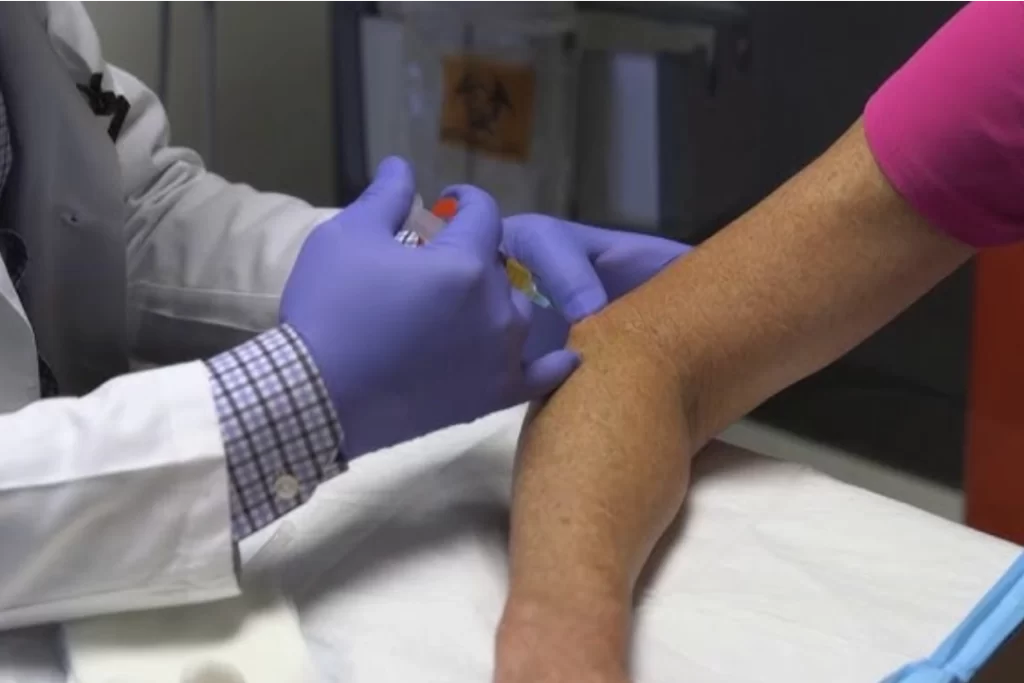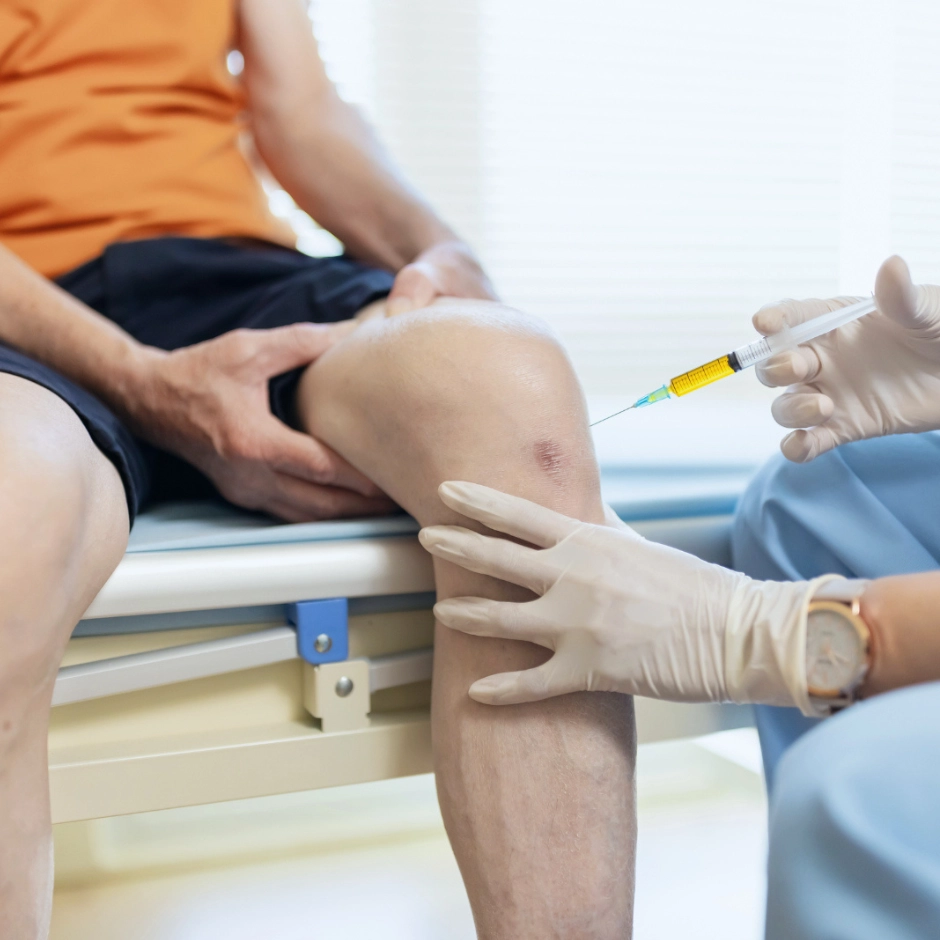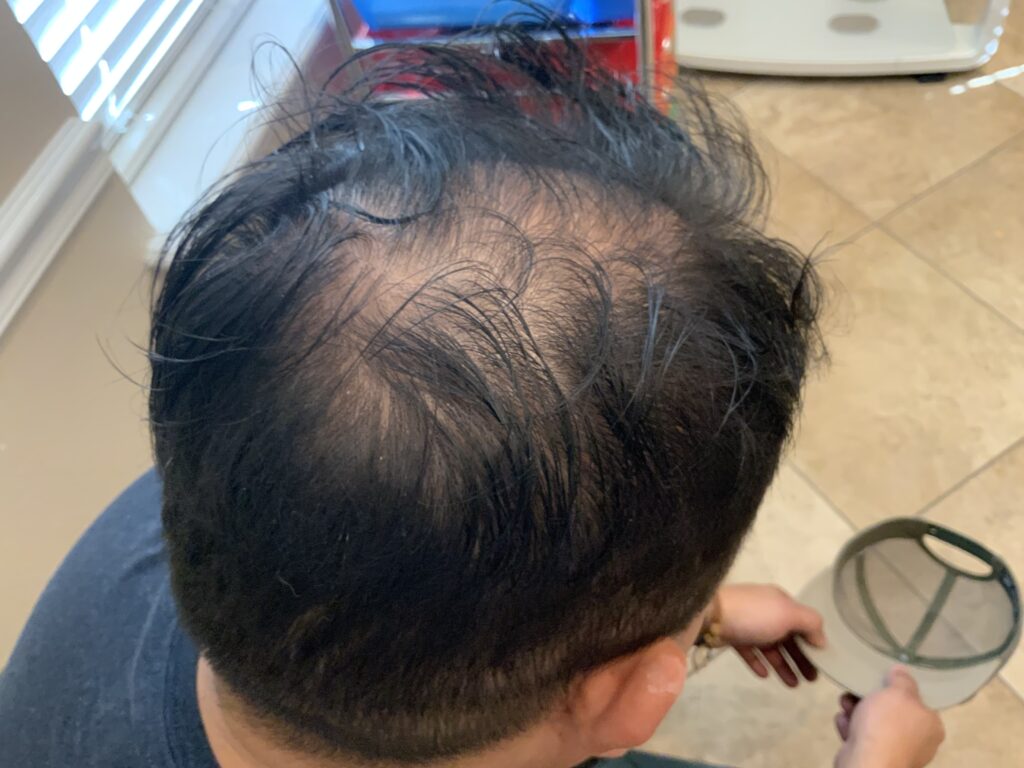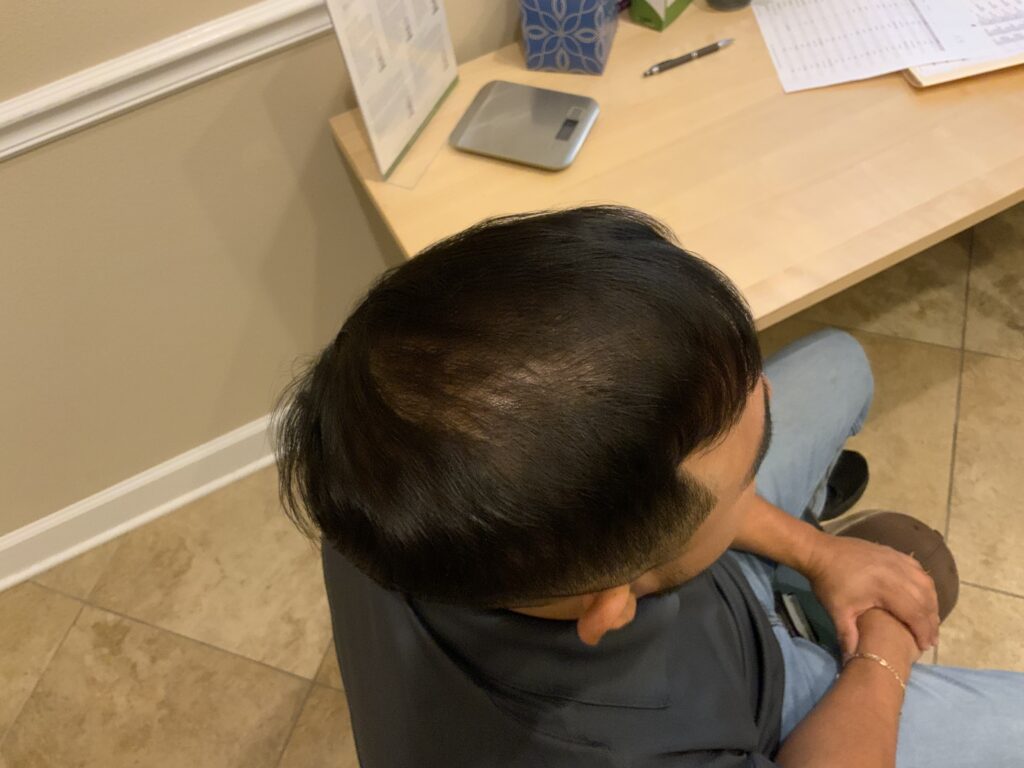
Platelet Rich Plasma (PRP) with Exosomes
PRP is a therapy produced from the patient’s own blood that is made up of plasma and a high concentration of platelets. It works by concentrating platelets from your own blood to stimulate tissue repair, reduce inflammation, and speed up the recovery process.Under the guidance of fluoroscopy imaging, PRP is injected directly into the affected area, delivering a high concentration of platelets, growth factors, and cytokines to promote healing at the injury site.
How Does PRP Joint Treatment Work?
The Procedure
PRP injections are an office based procedure that can take 30 minutes to an hour, depending on how long it takes to draw the blood. After check-in, the patient will have between 30-60cc of blood drawn into a special syringe. The syringe is then placed into a FDA approved centrifuge machine, which will separate the PRP from the rest of the blood. The separated PRP is drawn into another syringe, which will be injected under fluoroscopy image guidance into the affected area.
How Does it Work?
Platelets are best known for their role with blood clotting. They contain growth factors, which are proteins that assist in the rebuilding process of healing tissue. Placing a very high concentration of these growth factors near injured areas accelerates the body’s natural healing response. Additionally, PRP can be formulated to have an anti-inflammatory effect when used in osteoarthritis. PRP has been in clinical use since as early as the late 1980s for dental, orthopedic and plastic surgery procedures.
Patient Preparation
Before Treatment
- No corticosteroids for two to three weeks prior to the procedure.
- No anticoagulation use five days prior to the injection
- Increase fluid intake in the 24 hours prior to the procedure.
- Discontinue use of NSAIDs one week prior to the procedure. These include aspirin, ibuprofen, naproxen, and nabumeton.
Recovery After Treatment
- Avoid strenuous and prolonged activities.
- Do not twist, compress, or overexert the area of treatment.
- Avoid use of anti-inflammatory medications such as aspirin, NSAIDS (Ibuprofen, Naproxen Sodium, Meloxicam).
- Stay hydrated and eat as healthy as possible, avoiding sugar.
- For the first 2 days after your injection, do not submerge in lakes, bathtubs, or jacuzzi’s.
- Do not use heating pads or icepacks.
- No scratching if the injection site is itching.
- Schedule your follow up visits.

FAQs
Frequently Asked Questions
Our FAQ section answers common questions about Platelet Rich Plasma (PRP) with Exosomes.
Who is a good candidate?
Anyone interested in avoiding steroid shots, surgery, or pain medications, is a good candidate. Professional athletes have chosen PRP treatment over surgery for years because the recovery time is significantly reduced and it is a safer, natural way to heal. PRP can treat both chronic and acute conditions ranging from arthritis pain to pain in your shoulder, back, elbow, knee, or hip.
Are there any risks?
Because the therapy uses a patient’s own blood, there are typically no negative side effects. Most patients tolerate PRP therapy quite well, although some patients report post-injection soreness.
How long does it take to work?
The results of PRP treatment are most noticeable a few weeks after joint injections and are not permanent. Patients may require additional injections at the direction of the provider.
PRP for Hair Restoration: Revitalize Your Hair Naturally
Platelet-Rich Plasma (PRP) therapy for hair restoration is a cutting-edge, non-surgical treatment designed to stimulate hair growth and restore natural thickness and density. By utilizing your body’s own growth factors, PRP helps revitalize hair follicles, promoting new hair growth in areas affected by thinning or hair loss. Whether you’re experiencing early-stage hair thinning or more advanced baldness, PRP offers a safe and effective solution without the need for invasive surgery.
Frequently Asked Questions
1. Who is a good candidate for PRP hair restoration?
PRP is suitable for individuals with early-stage hair loss, those suffering from androgenetic alopecia (pattern baldness), or those experiencing thinning hair. It’s not recommended for individuals with certain medical conditions or active scalp infections.
2. Is PRP treatment painful?
Most patients find PRP injections relatively comfortable. A topical numbing cream is applied to minimize discomfort, and the procedure itself is generally quick.
3. How many PRP sessions do I need?
Typically, 3-4 sessions are recommended, spaced about 4-6 weeks apart. After the initial treatment series, maintenance sessions every 4-6 months can help sustain results.
4. Are the results permanent?
While PRP can significantly slow down or reverse hair loss, the treatment does not stop the natural aging process. Maintenance treatments may be required to preserve the results over time.
5. Are there any side effects?
Side effects are rare but can include mild swelling, redness, or tenderness at the injection sites. These side effects usually resolve within a few hours to a couple of days.
6. How long does it take to see results?
You may start noticing improvements in hair texture, thickness, and growth within 2-6 months. Full results are often visible within 12 months.


PRP for Hair Restoration: Revitalize Your Hair Naturally
Platelet-Rich Plasma (PRP) therapy for hair restoration is a cutting-edge, non-surgical treatment designed to stimulate hair growth and restore natural thickness and density. By utilizing your body’s own growth factors, PRP helps revitalize hair follicles, promoting new hair growth in areas affected by thinning or hair loss. Whether you’re experiencing early-stage hair thinning or more advanced baldness, PRP offers a safe and effective solution without the need for invasive surgery.
Frequently Asked Questions (FAQs)
1. Who is a good candidate for PRP hair restoration?
PRP is suitable for individuals with early-stage hair loss, those suffering from androgenetic alopecia (pattern baldness), or those experiencing thinning hair. It’s not recommended for individuals with certain medical conditions or active scalp infections.
2. Is PRP treatment painful?
Most patients find PRP injections relatively comfortable. A topical numbing cream is applied to minimize discomfort, and the procedure itself is generally quick.
3. How many PRP sessions do I need?
Typically, 3-4 sessions are recommended, spaced about 4-6 weeks apart. After the initial treatment series, maintenance sessions every 4-6 months can help sustain results.
4. Are the results permanent?
While PRP can significantly slow down or reverse hair loss, the treatment does not stop the natural aging process. Maintenance treatments may be required to preserve the results over time.
5. Are there any side effects?
Side effects are rare but can include mild swelling, redness, or tenderness at the injection sites. These side effects usually resolve within a few hours to a couple of days.
6. How long does it take to see results?
You may start noticing improvements in hair texture, thickness, and growth within 2-6 months. Full results are often visible within 12 months.
